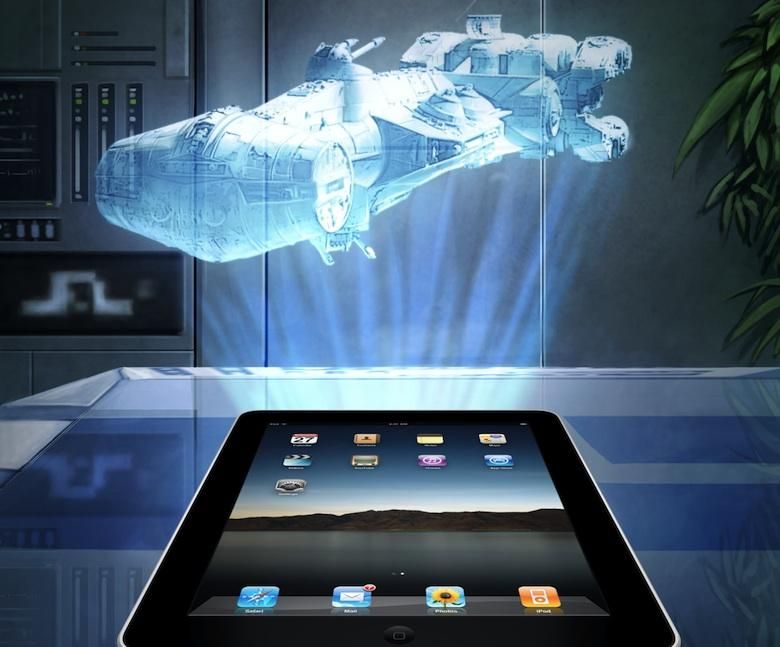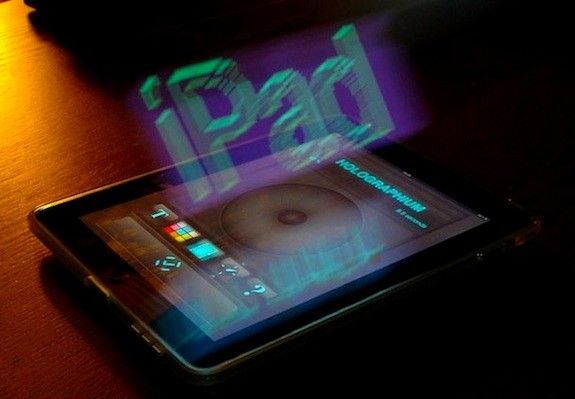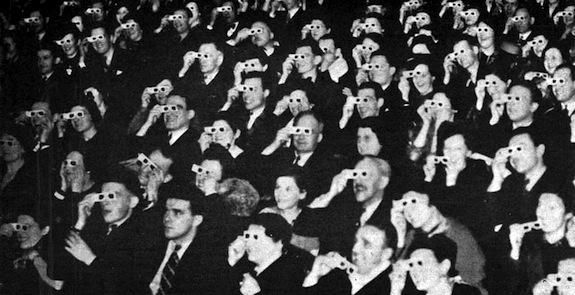Anyone remember the latest attempted mobile 3D resurgence? It wasn't that long ago; just last summer we Americans saw the release of the Evo 3D as a follow-up device to the best-selling smartphone in Sprint's history. The "Evo" branding marked this device for a premium slot and guaranteed its title as one of the most anticipated phones of 2011 (in the US, anyway). Even though I was deeply invested in another platform at the time and had no real use for 3D, the device piqued my curiosity.
Indeed, we pegged 3D as one of the trends of 2011 at last year's MWC, alongside "Android" and the more general category "speed." LG's Optimus 3D led the charge in the smartphone space with the first-ever glasses-free 3D display on such a small device. Later in the year, we saw some 3D tablets hit the market, and speculation kicked off in some circles that the display on Apple's third-generation iPad might make the jump to more than two dimensions. We know how that turned out.
Pictured: not what we got.
In fact, not only did the "3D revolution" get the cold shoulder from Apple; it got snubbed by everyone. Once the anticipation for the new go-to differentiator gave way to real-world experience, it became pretty clear that the buzz was bigger than the reality.
One doesn't need to look far to find reasons for this. 3D content takes effort to produce; it's not an after-effect that can easily be grafted on. Even with specialized equipment on the recording side, it's an inconvenient format for viewers, as most people don't own 3D desktop monitors. As a result, 3D content can often only be viewed on the device which created it. And to fully utilize the multidimensional capabilities of that device, content must be specially created for it. The Evo 3D, while a capable device, suffered from a scant collection of 3D-optimized apps and content- a problem felt equally by its contemporaries, and even more keenly by tablets.
The inconsistent nature of the 3D fad is nothing new; the first crude anaglyphs burst onto the scene in the ripe old year of 1915, and the technology has been improving fairly consistently in the almost-century since. Its first popularity explosion took place over fifty years ago, also considered by some enthusiasts the "golden age" of 3D filmmaking.
Beware the scourge of Gamera!
From my standpoint, one of the reasons 3D refuses to die off is its potential to be something really amazing. Unlike other fads, 3D has the power to be a transformative experience in UI interaction, and an awesome "fun-multiplier." The big challenge is in execution; the potential is there, but it's never really been done properly.
An immersive environment like a movie theater is one thing; there, even if you're forced to wear glasses made of cheap cardboard or oily plastic, the experience is at least passable because you're focused entirely on what's happening inside the world you're watching. The screen is the only illuminated section of the room, and it's massive in scale. Even if you're watching the most inane tripe ever, you have little choice but to be drawn in to the action.
That doesn't always translate to smaller-scale experiences. I remember my first encounter with a 3D TV. I was in New York City for a trade show and one manufacturer or another had a few of its new 3D flatscreens on the show floor. They were using footage of the 2008 Olympics to show off the feature. I stuck my head into the fixed-mount glasses, let my eyes focus — and promptly LoLed.
The problem wasn't the picture quality, or an issue with the effect; it was very realistic and the color reproduction was beautiful. My issue was that, even though the flatscreen on display was a good 40' or so on the diagonal, the images were tiny. Since it wasn't a massive, 80-foot movie screen in a cavernous room, the effect didn't scale well. I felt as though I were peeking into a diorama box full of miniature people dancing.
Remember The Indian in the Cupboard? That's what it felt like.
Of course it would stand to reason that the effect would be similar, only more so, on a smartphone's 4-inch display. But that's not the case; it actually holds up better to my eye. Maybe there's some tradeoff the brain makes when it's forced to accommodate smaller screen sizes; maybe it can "believe more" when something's in the palm of one's hand. I'm not sure.
The problem at that scale, though, becomes one of implementation. Glasses-free 3D is an amazing technological feat, but frankly ... it doesn't work all that well. Morgan Gillespie, in a piece from April on autostereoscopic mobile displays, describes the challenges succinctly:
To generate 3D imagery for the user there are quite a few extra hoops an OEM needs to jump through above and beyond a standard display. This includes higher costs for the manufacturer on the screen, added strain on the CPU to effectively render the display twice at the same resolution, more power from the backlight to produce similar brightness, a generally thicker display panel to incorporate the parallax barrier, and a much larger battery to compensate for the additional draw. All of these factors add up to a glasses free 3D experience that many describe as unimpressive.
"Unimpressive" is right; the 3D effect on the last generation of devices was only visible at a narrowly-prescribed distance from the display, and many users complained of headaches after prolonged viewing. For my part, though I have excellent vision, I could only make out the depth illusion for very short periods.
Going forward, the road is unclear. The Nintendo 3DS is the company's fastest-selling game console ever, so there's obviously a market for 3D devices. But the 3DS isn't a mobile phone, and the challenges it faces in its market are accordingly very different. While LG has followed up on its initial offering with the Optimus 3D Max, HTC's new Evo is bereft of the technology, and Samsung's rumored 3D handset is nowhere to be found. We're very likely looking at another slump in 3D adoption, until OEMs figure out how to deliver a truly stunning experience without so many compromises. Until then, it seems inevitable that mobile displays offering more than two dimensions will remain at most a novelty, and at worst, another in the long line of failed 3D fad products.
Do you own a 3D smartphone or tablet? Sound off in the comments about how much you love or loathe it, and let us know what your ideal 3D device would be.
Holographic iPad Photo Source: Extra Hype
Nintendo 3DS Sales Figures Source: gamrConnect




